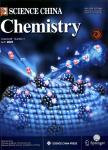版权所有:内蒙古大学图书馆 技术提供:维普资讯• 智图
内蒙古自治区呼和浩特市赛罕区大学西街235号 邮编: 010021

作者机构:School of Chemistry and Materials Engineering Bohai University Key Laboratory of Biotechnology and Bioresources Utilization of Ministry of Education Dalian Minzu University Science Mathematics and Technology Cluster Singapore University of Technology and Design
出 版 物:《Science China Chemistry》 (中国科学:化学(英文版))
年 卷 期:2025年
核心收录:
学科分类:081704[工学-应用化学] 07[理学] 08[工学] 0817[工学-化学工程与技术] 070302[理学-分析化学] 0703[理学-化学]
基 金:supported by the Liaoning Provincial Key Research and Development Project (Civil Science and Technology, 2024JH2/102500053) the Open Fund of Key Laboratory of Biotechnology and Bioresources Utilization (Dalian Minzu University), Ministry of Education of China (KF2024009) the Scientific Research Project of Liaoning Provincial Department of Education (LJ212410167039, JTTMS1618) the National Natural Science Foundation of China (22278038, 12374368) the Liaoning Revitalization Talents Program (XLYC2203011)
摘 要:This study presents an innovative dual-lock-and-key fluorescent probe engineered for the simultaneous detection of bisulfite and viscosity. The functionalized probe,(E)-2-(1-ethyl-2-(N-methylquinolinevinyl)quinolin-4(1H)-ylidene)malononitrile(QCQNM), was strategically synthesized by conjugating the quinolylmalononitrile and N-methylquinolinium through an ethylene bridge. Within this construction, the N-methylquinolinium selectively targets bisulfite, while the vinyl moiety serves as a responsive rotor for viscosity. Notably, the presence of either sulfite or viscosity alone cannot elicit significant fluorescent responses from the probe. Conversely, concurrent exposure to both bisulfite and viscosity triggers enhanced fluorescent signals,indicative of an “AND logic gate characteristic. Quantum chemical calculations were further applied to rationalize the working mechanism of the probe. Additionally, the excellent biocompatibility of this probe in cellular imaging experiments highlights its potential for specific mitochondrial imaging by modulating both exogenous/endogenous bisulfite levels alongside viscosity induced by monensin. This novel approach thereby offers a distinctive analytical tool for monitoring the coexistence of viscosity and bisulfite in specific metabolic and physiological contexts.